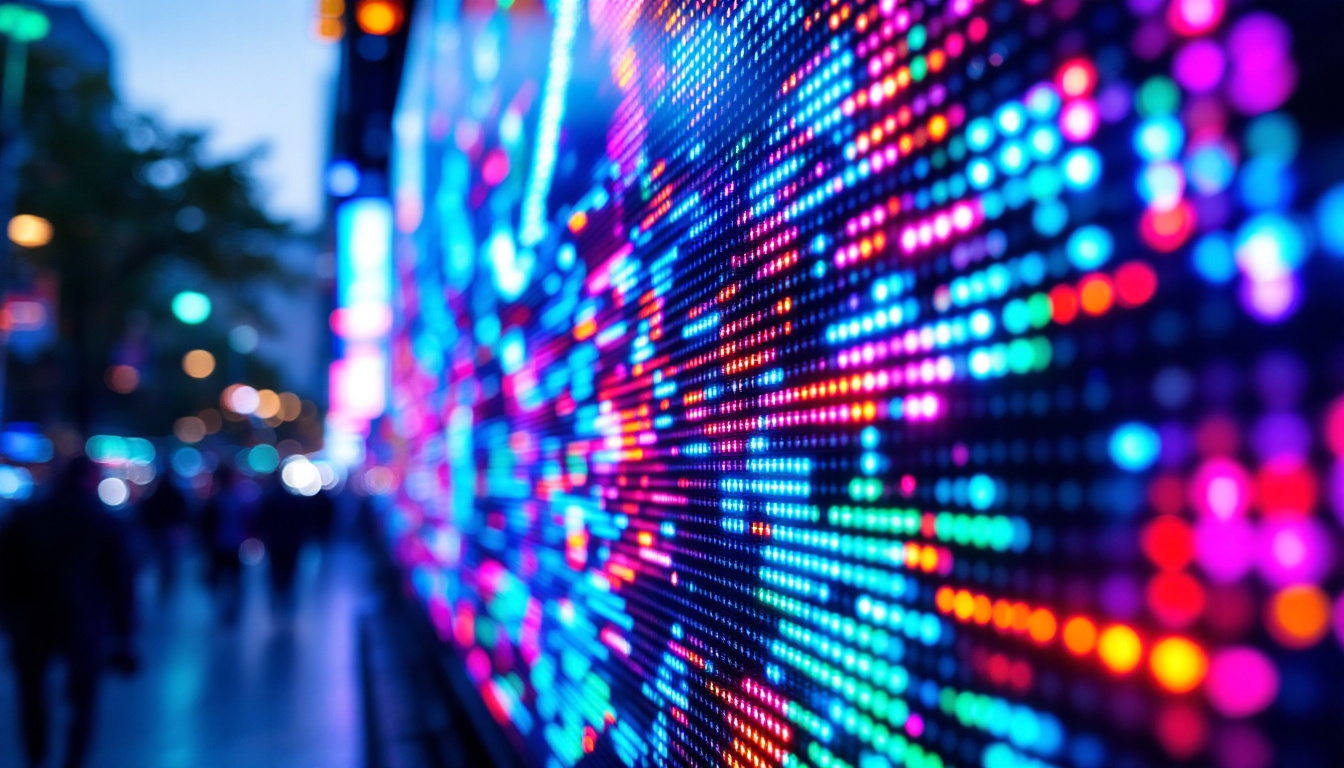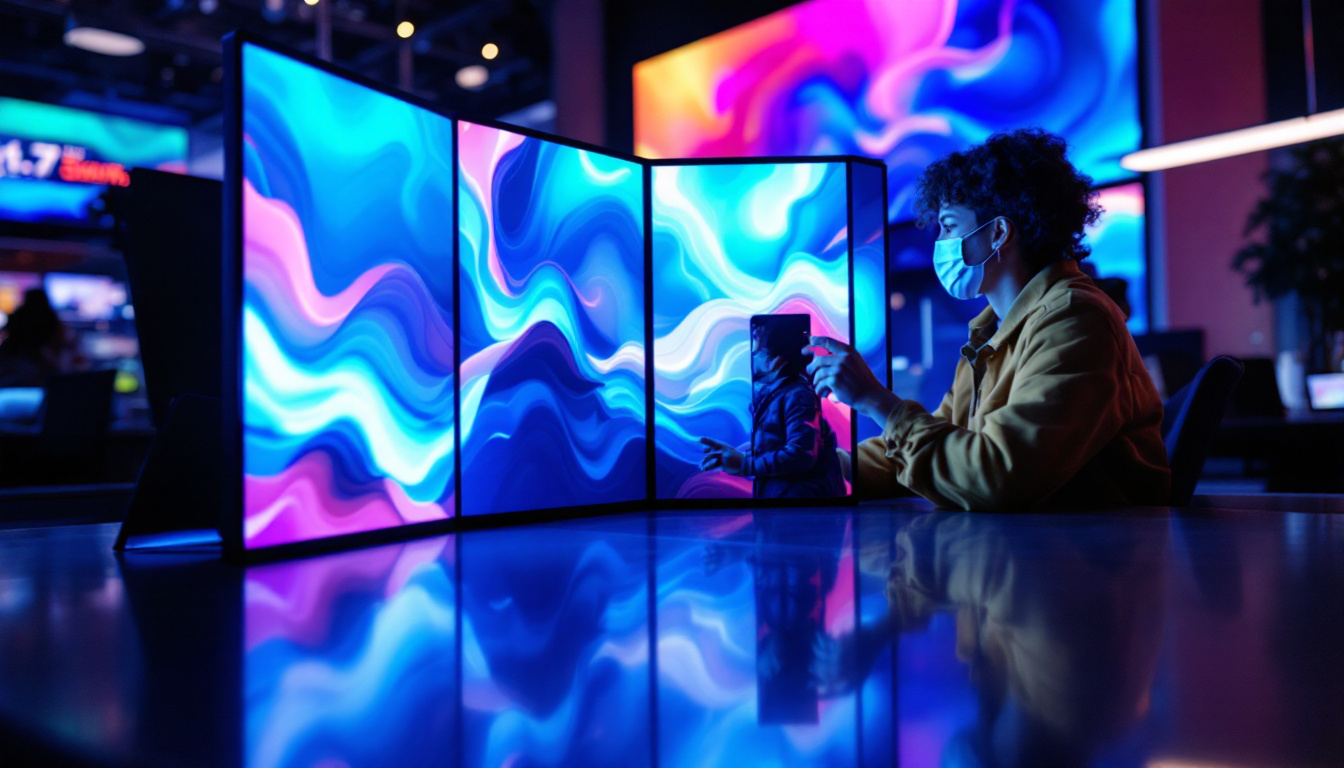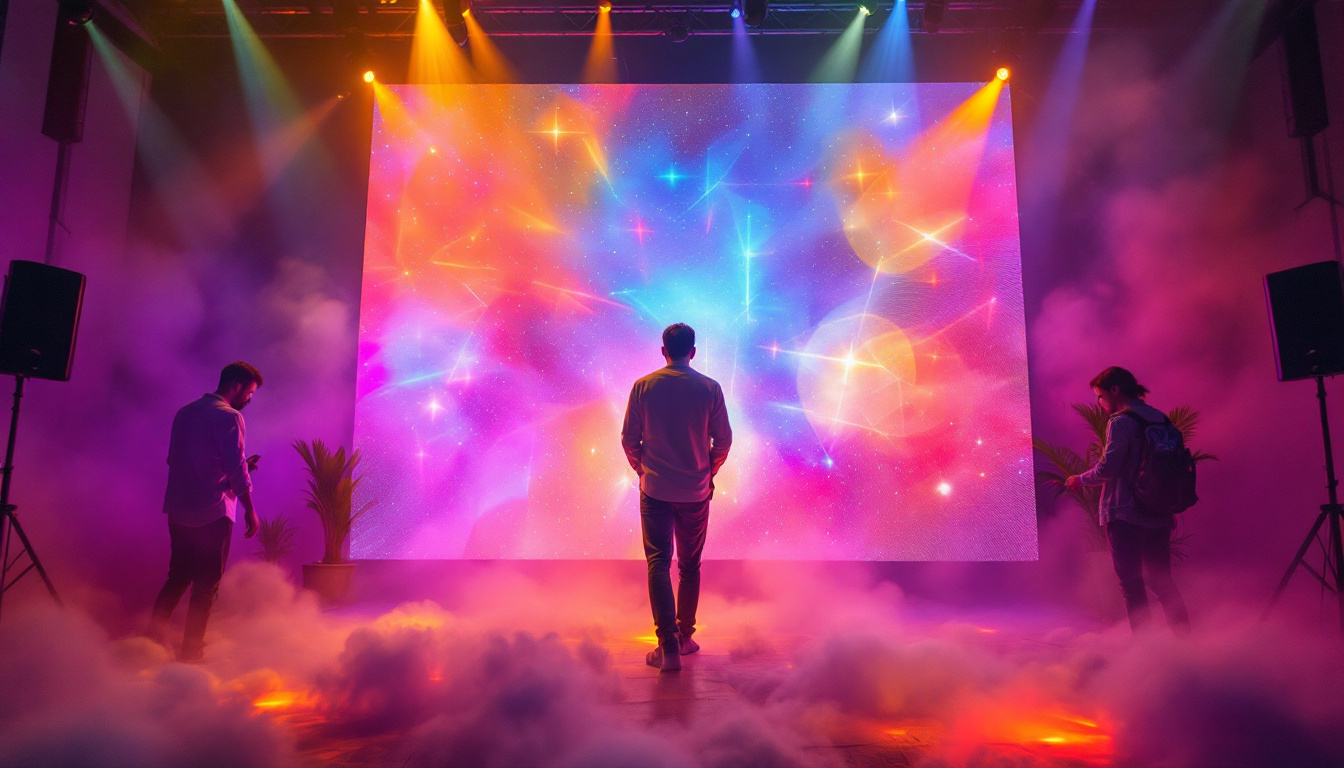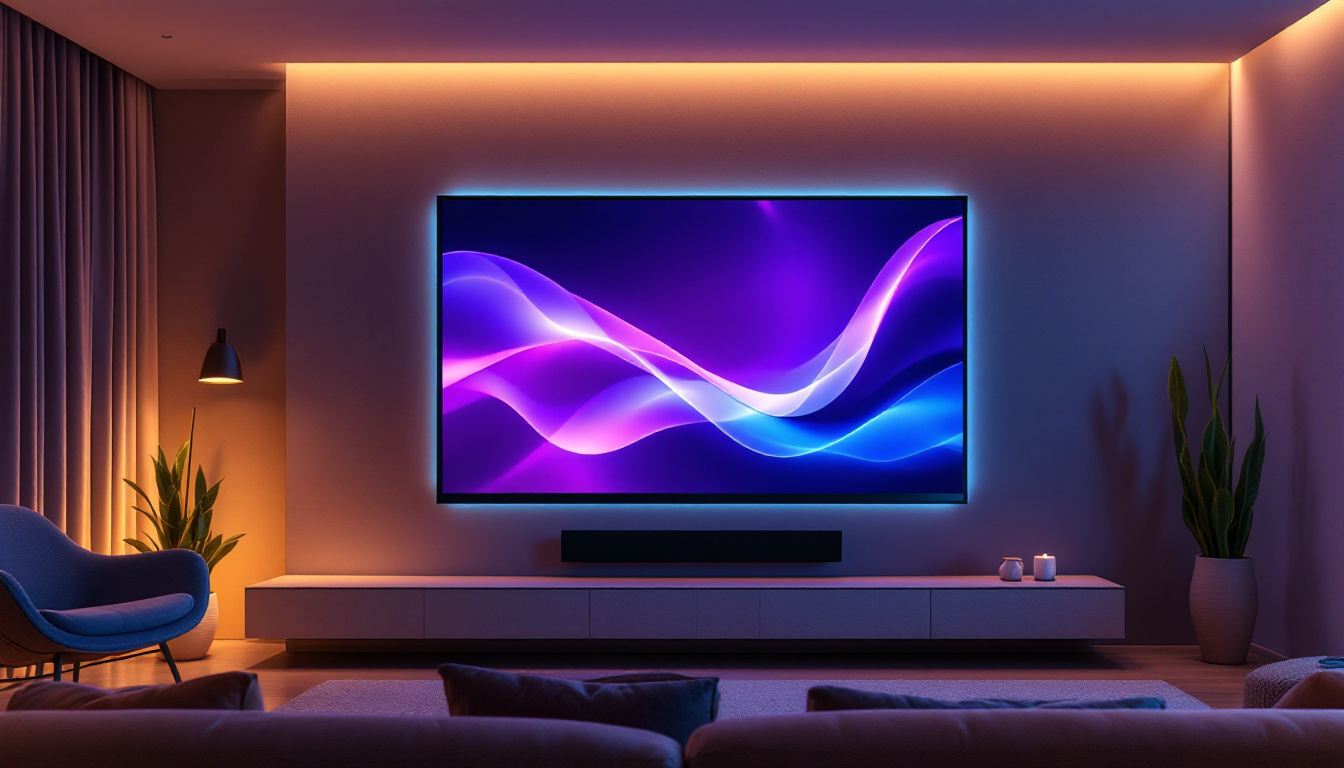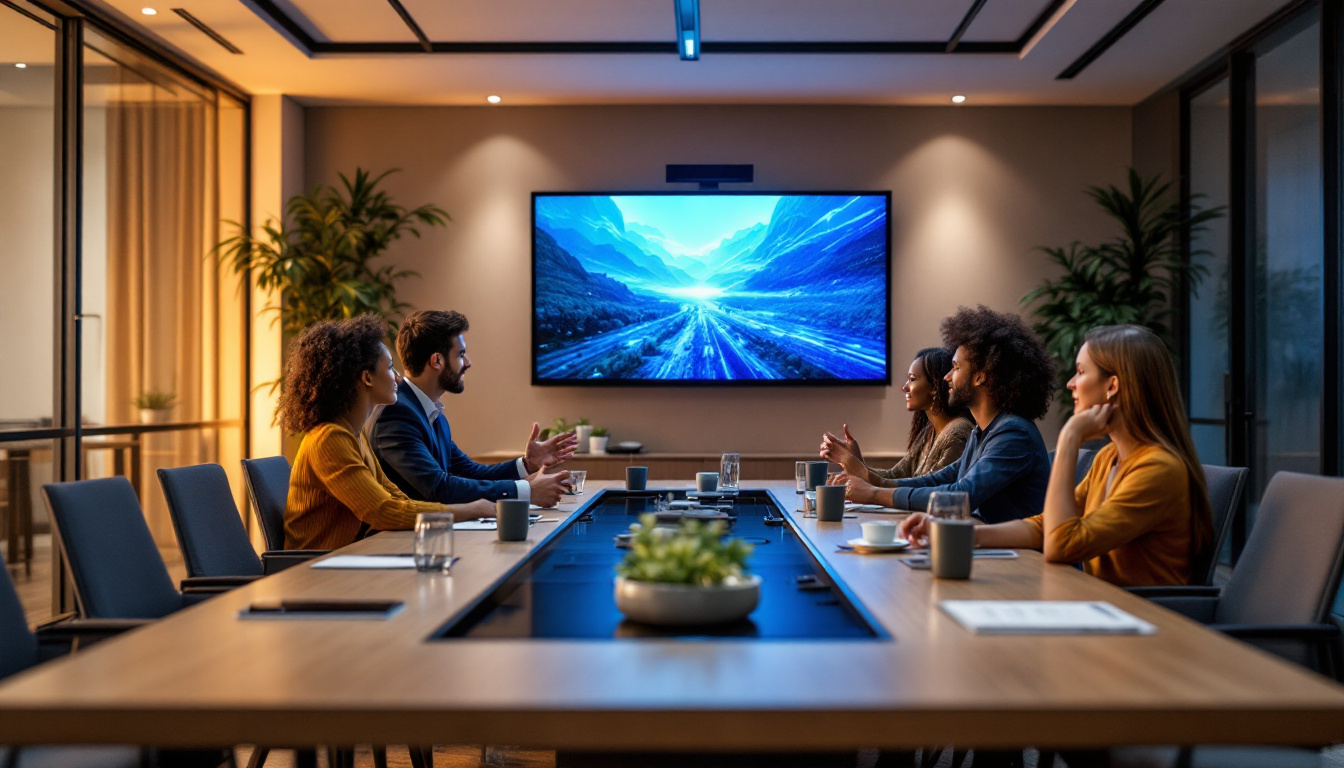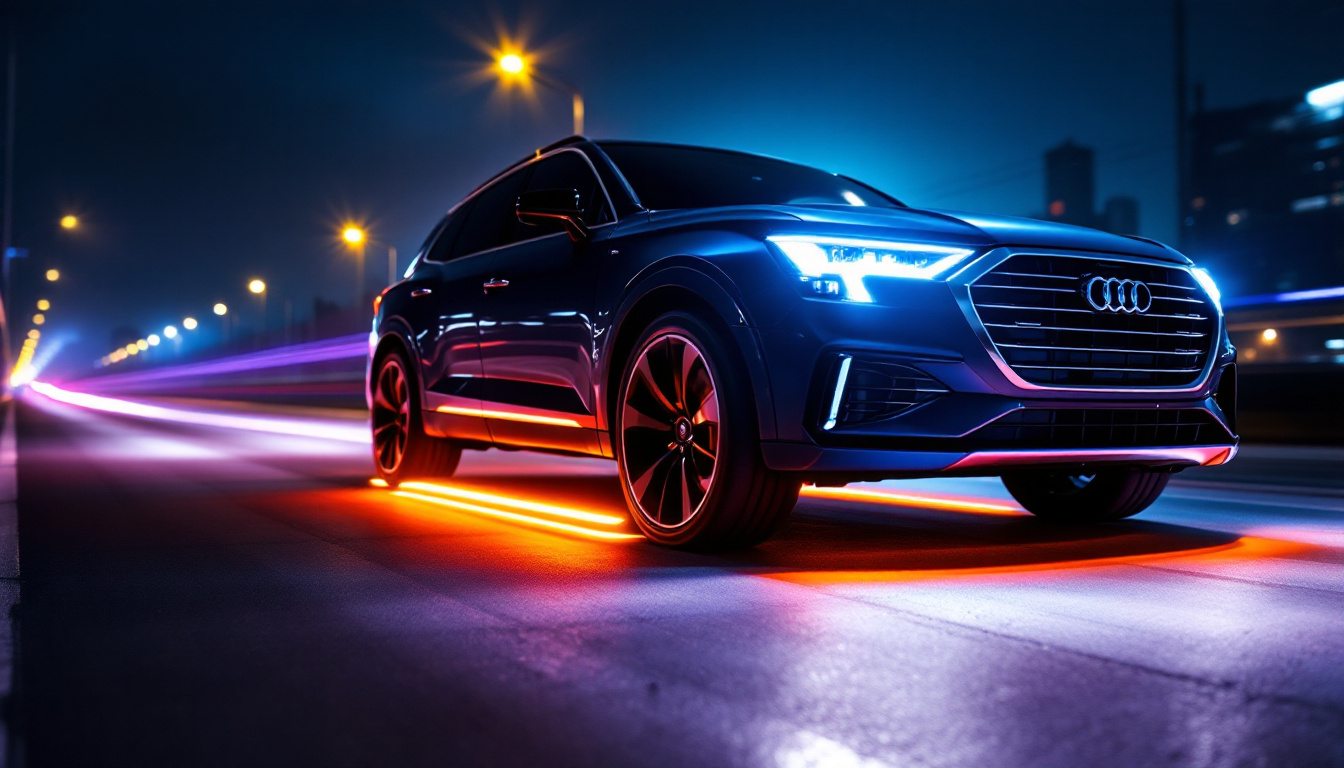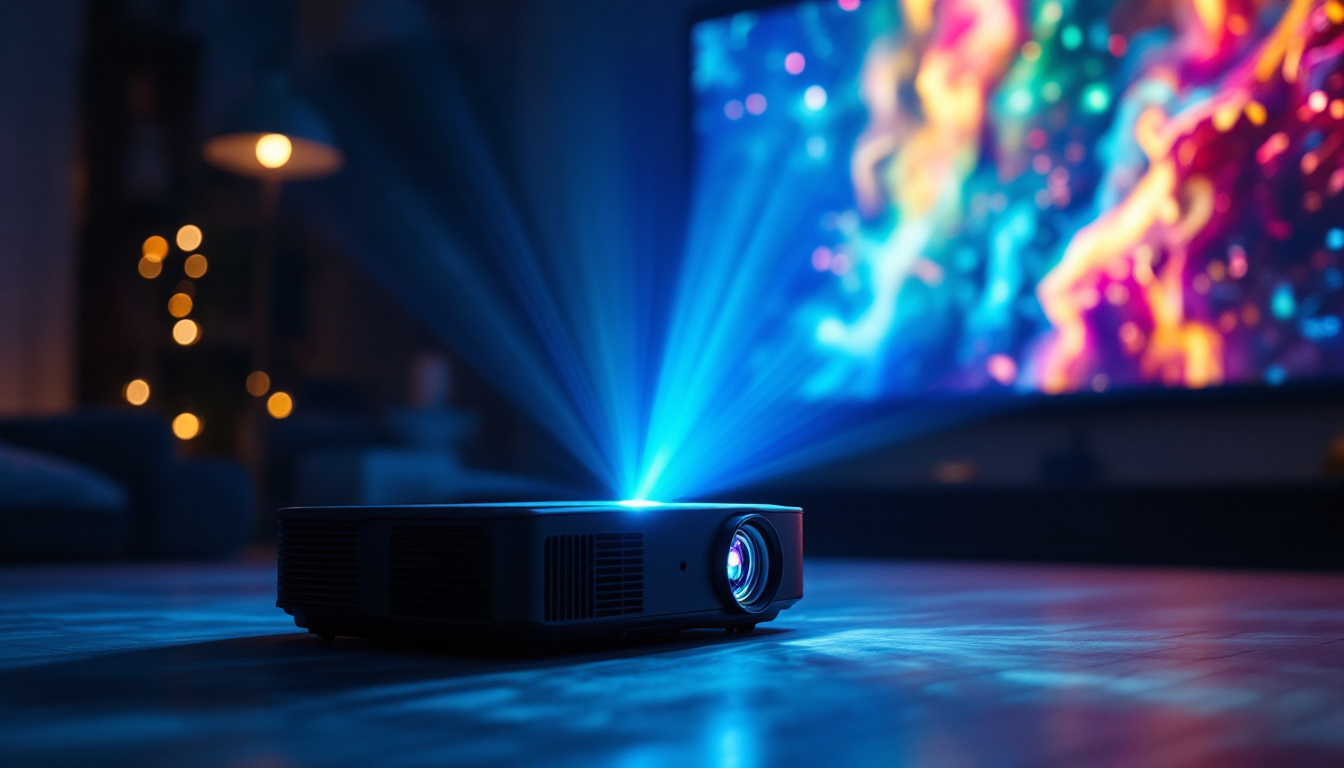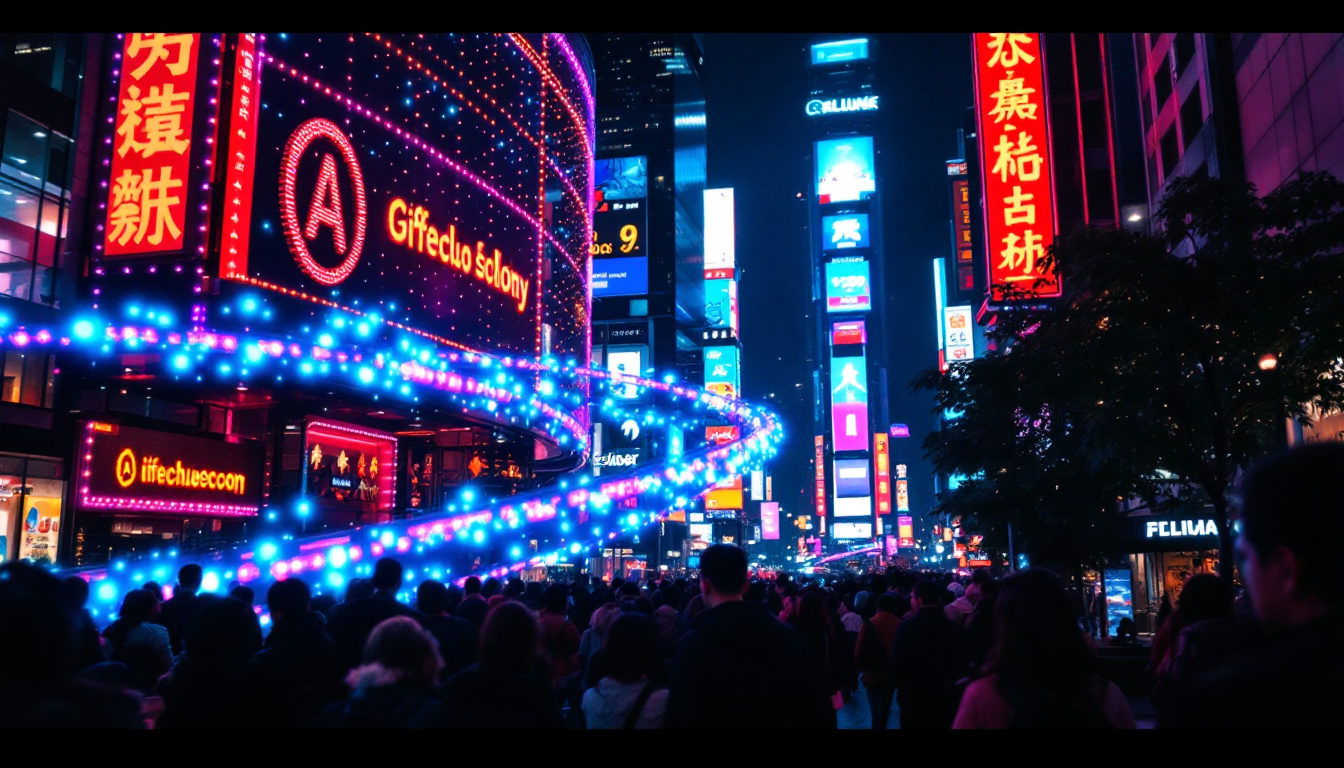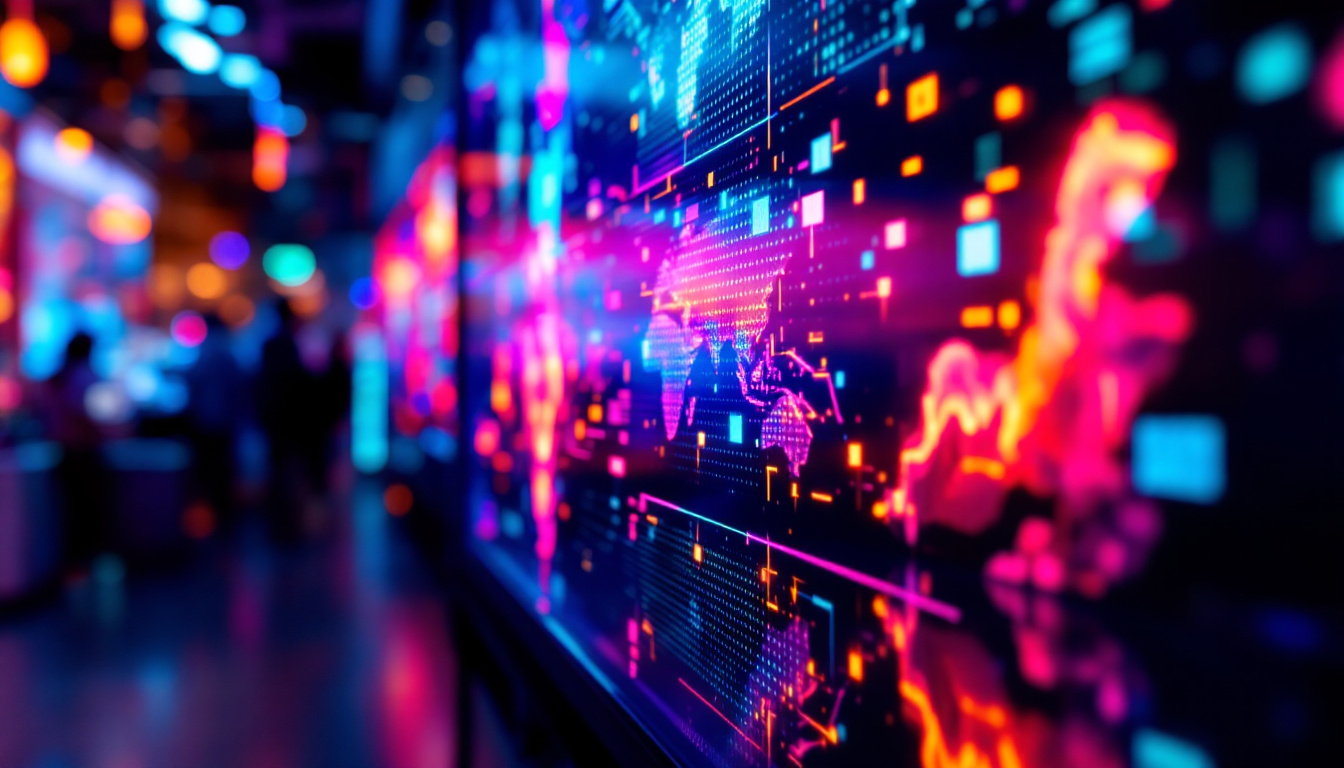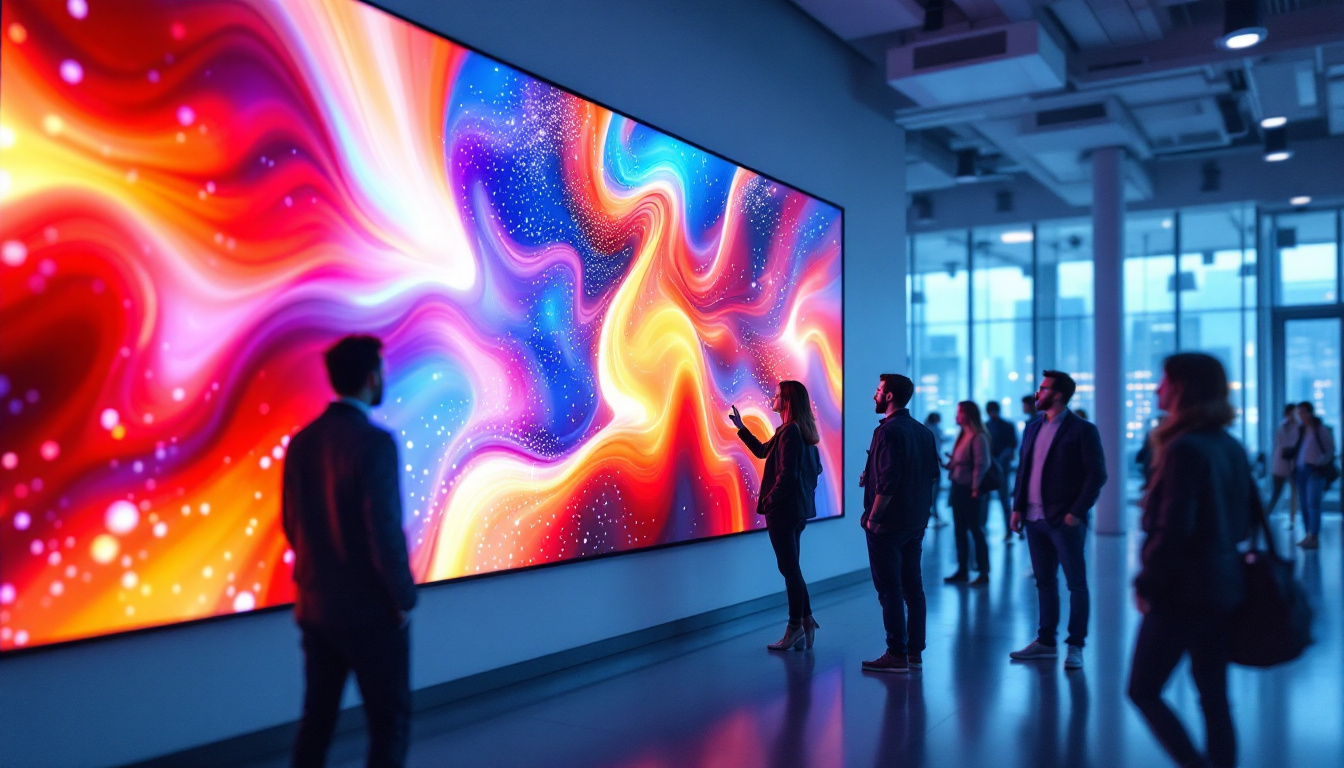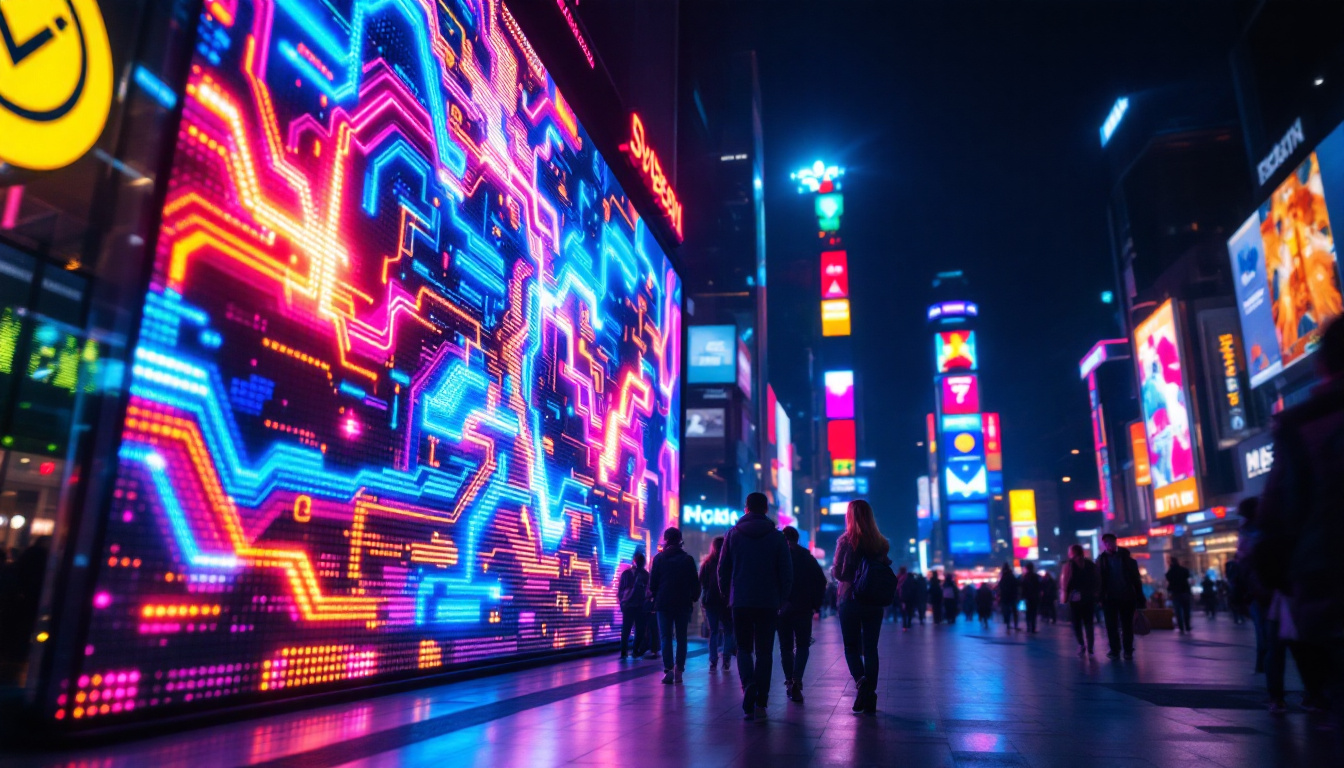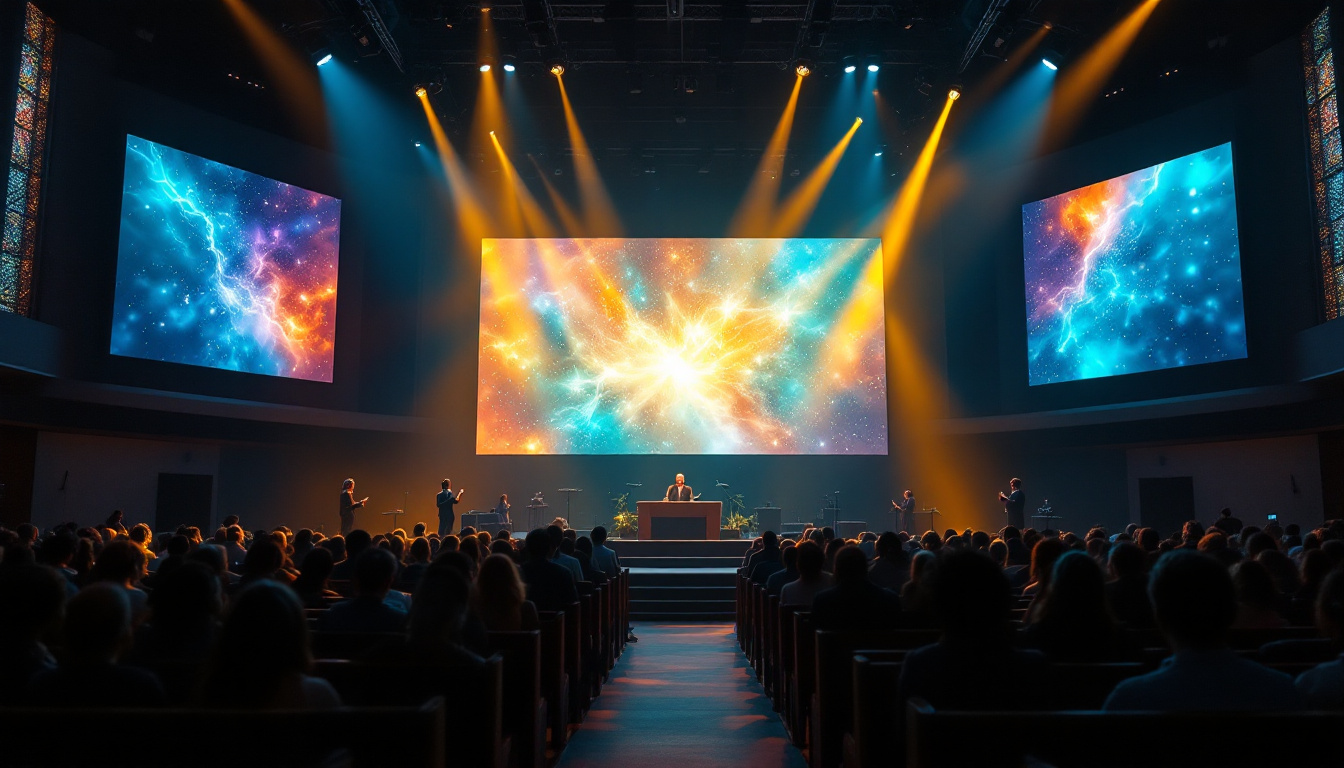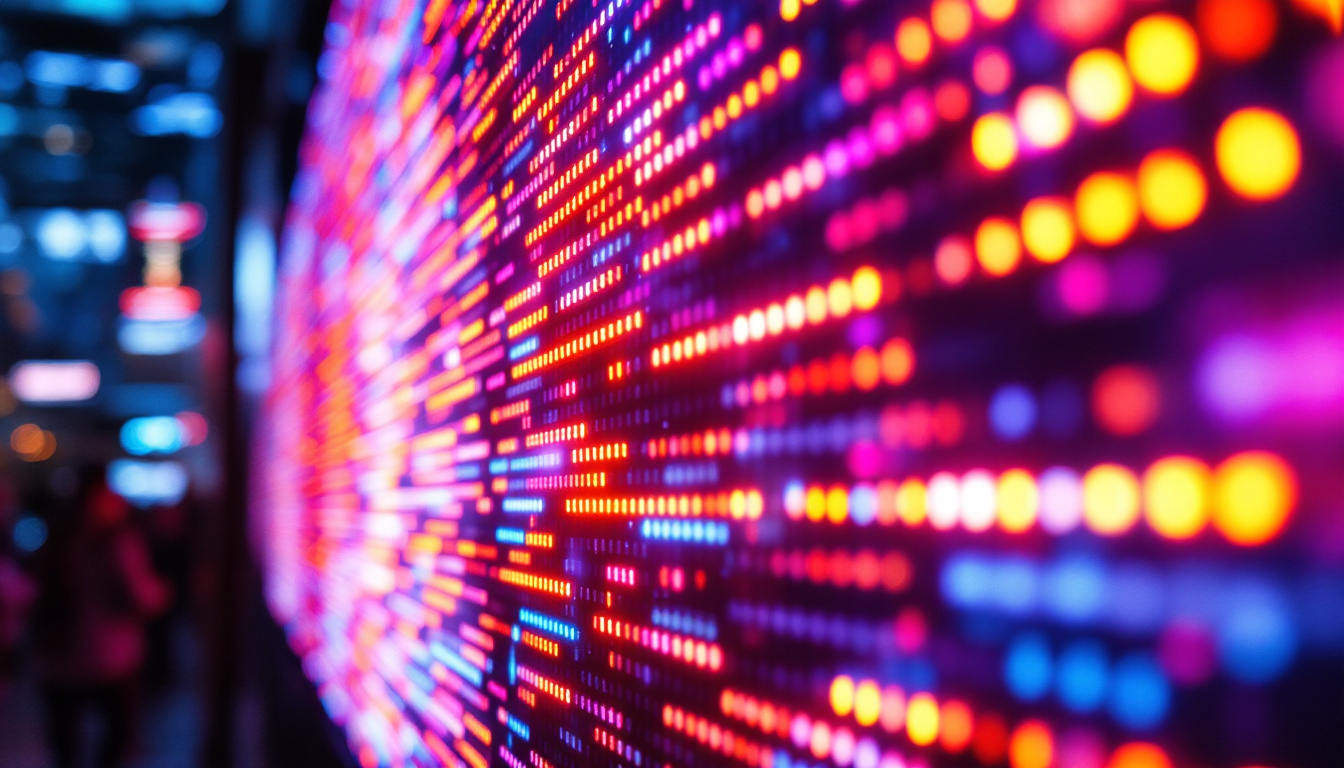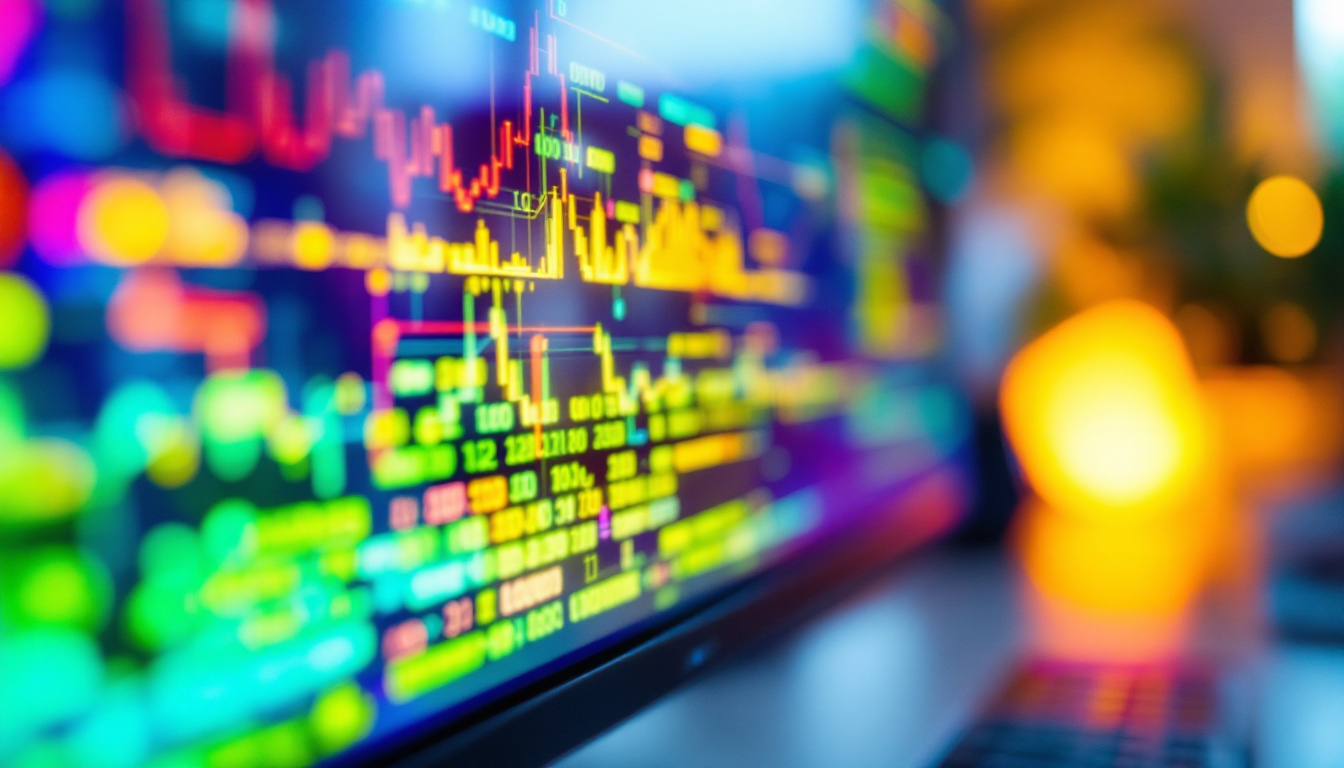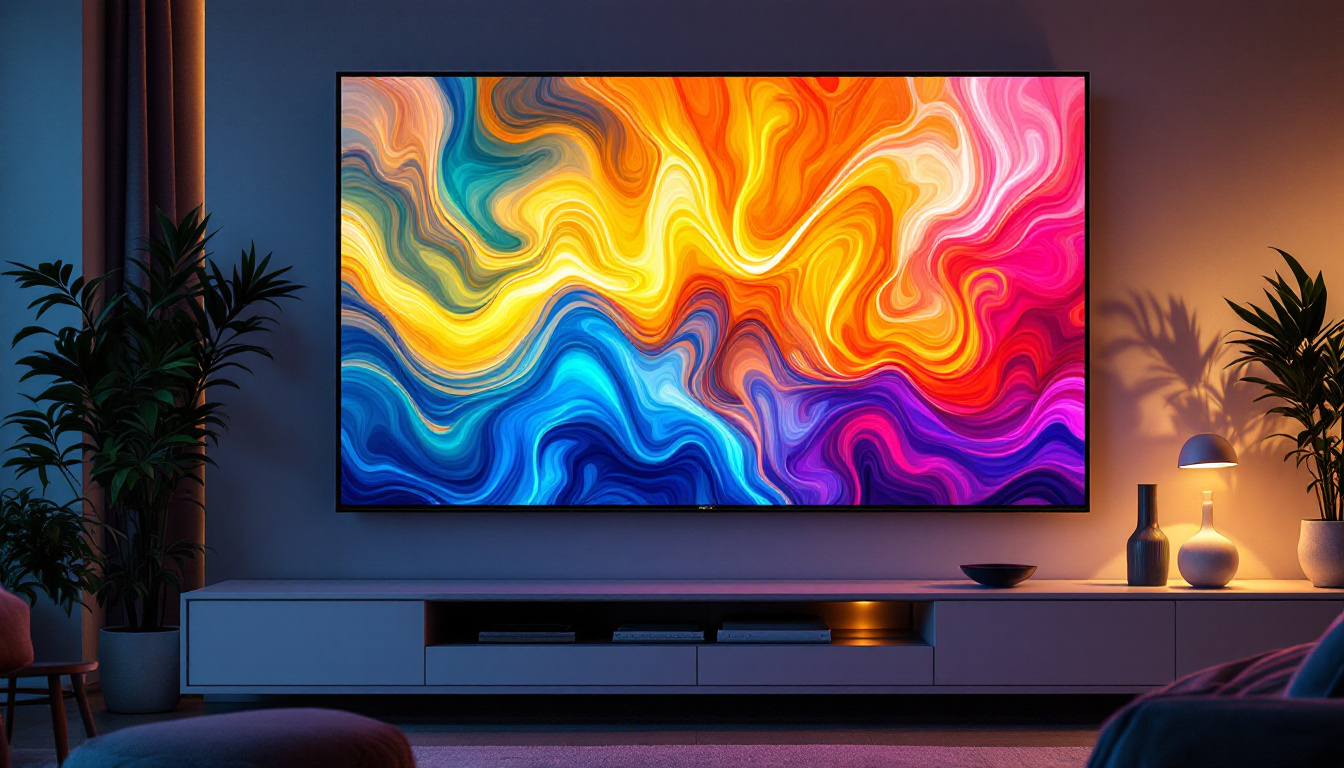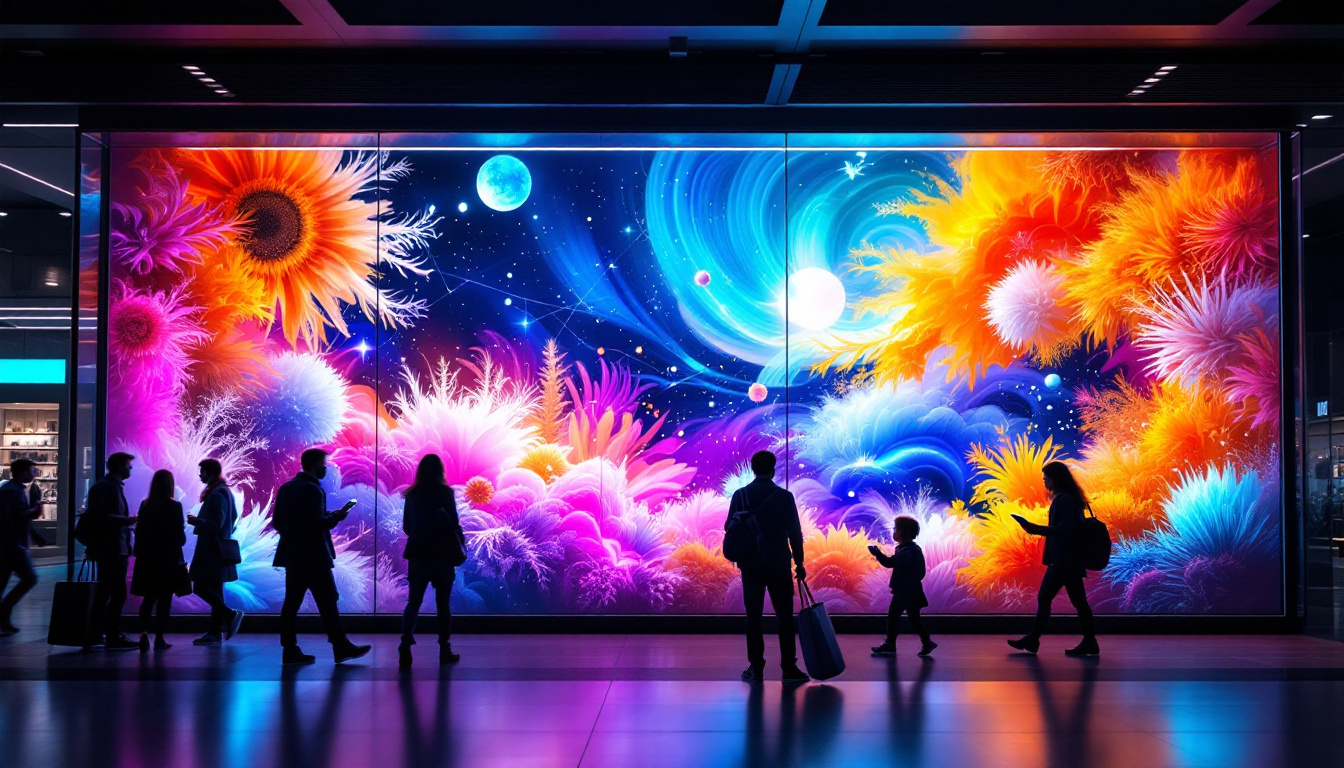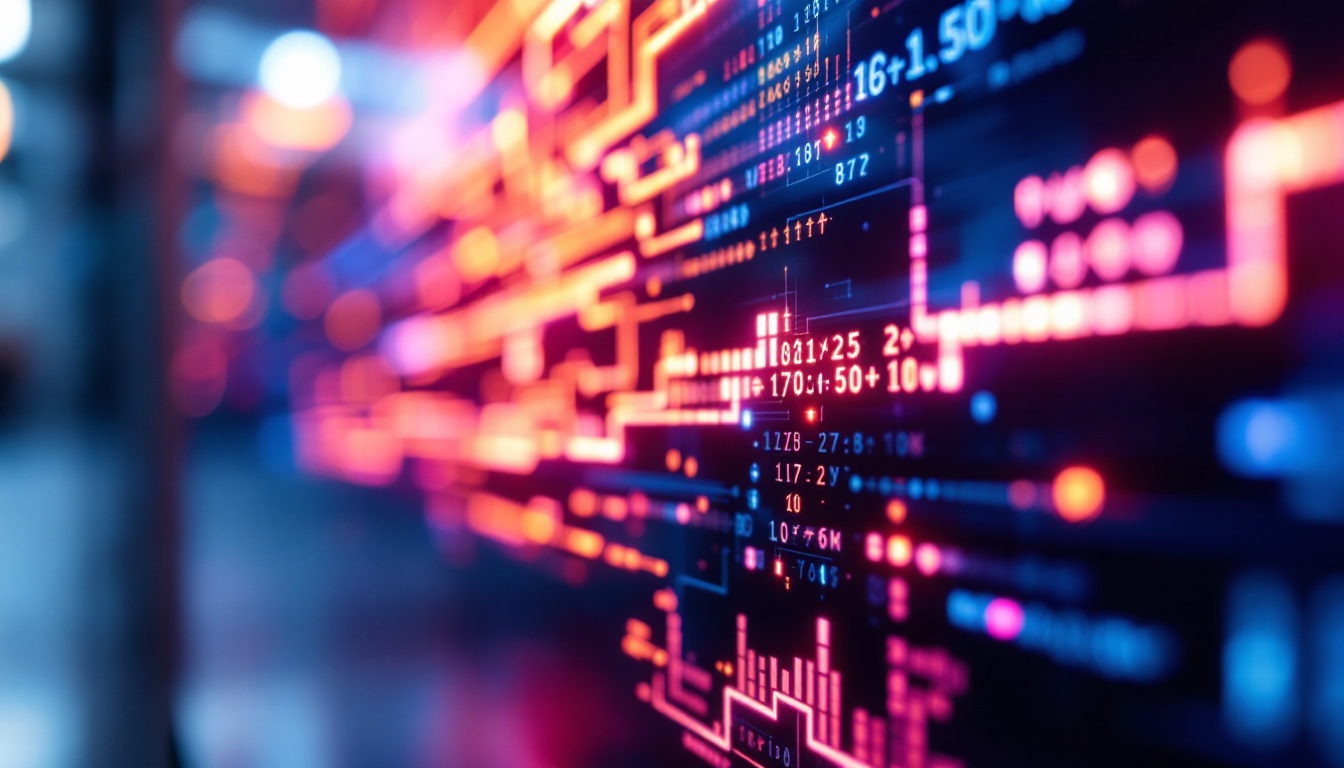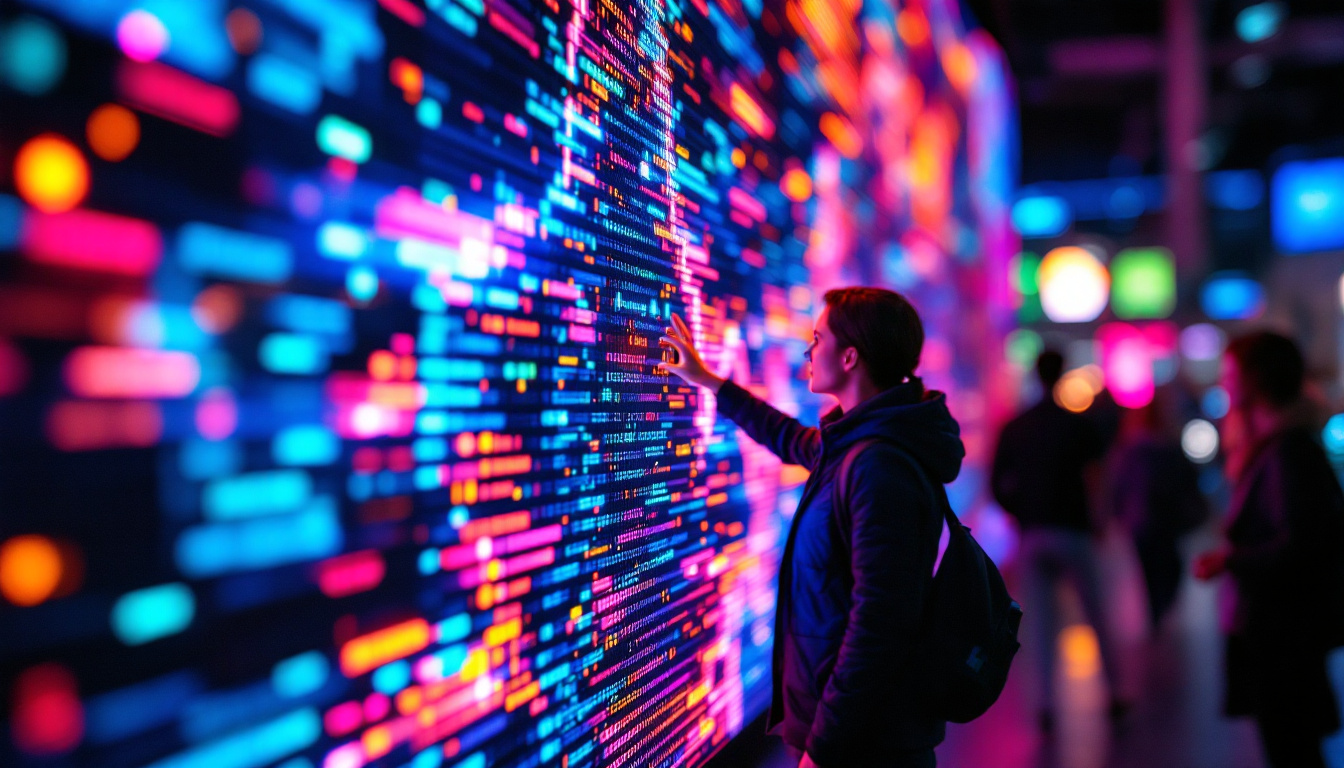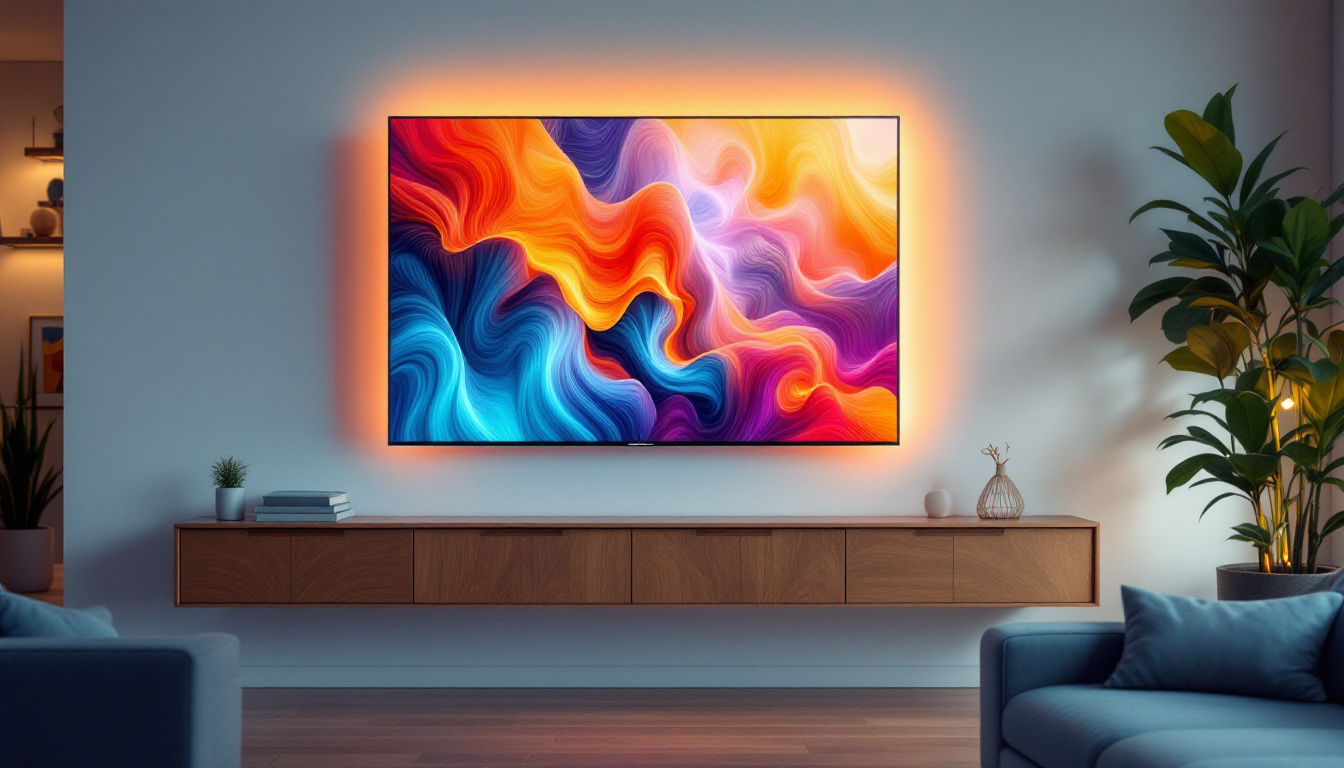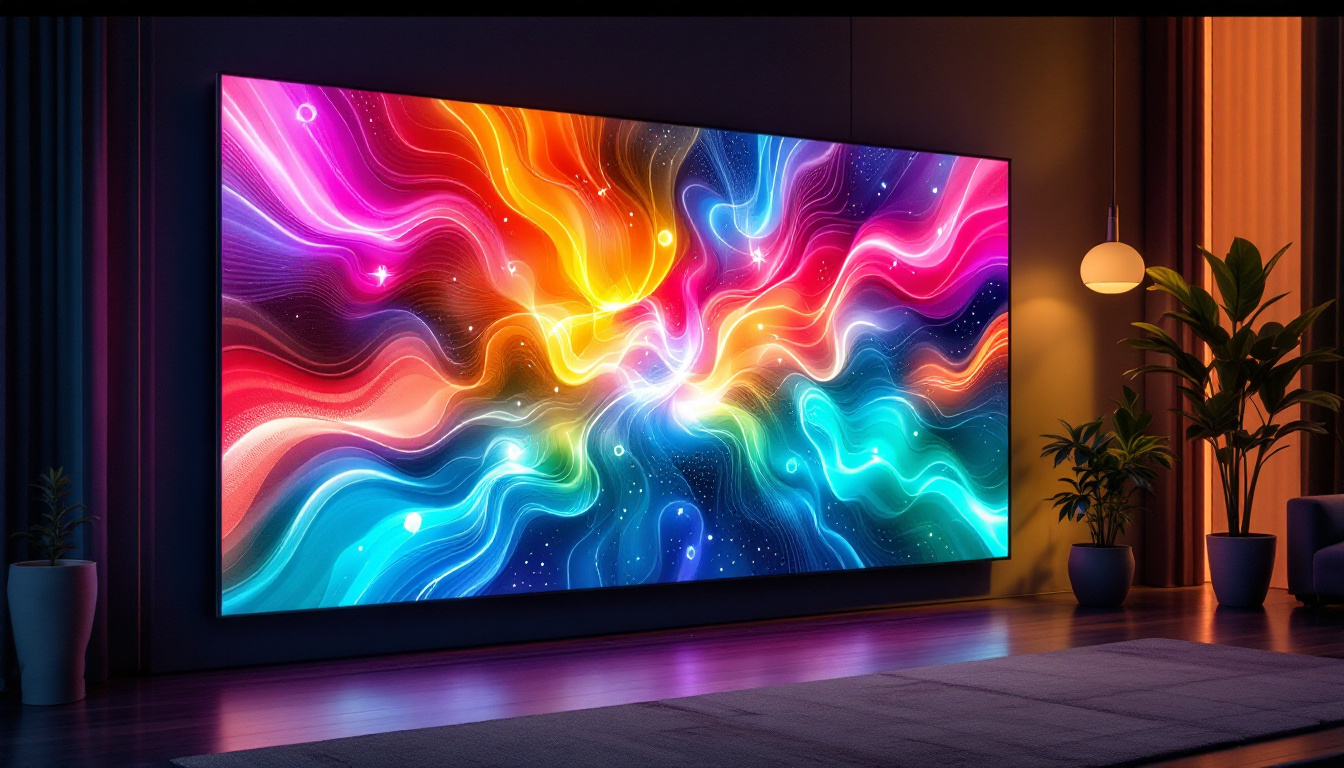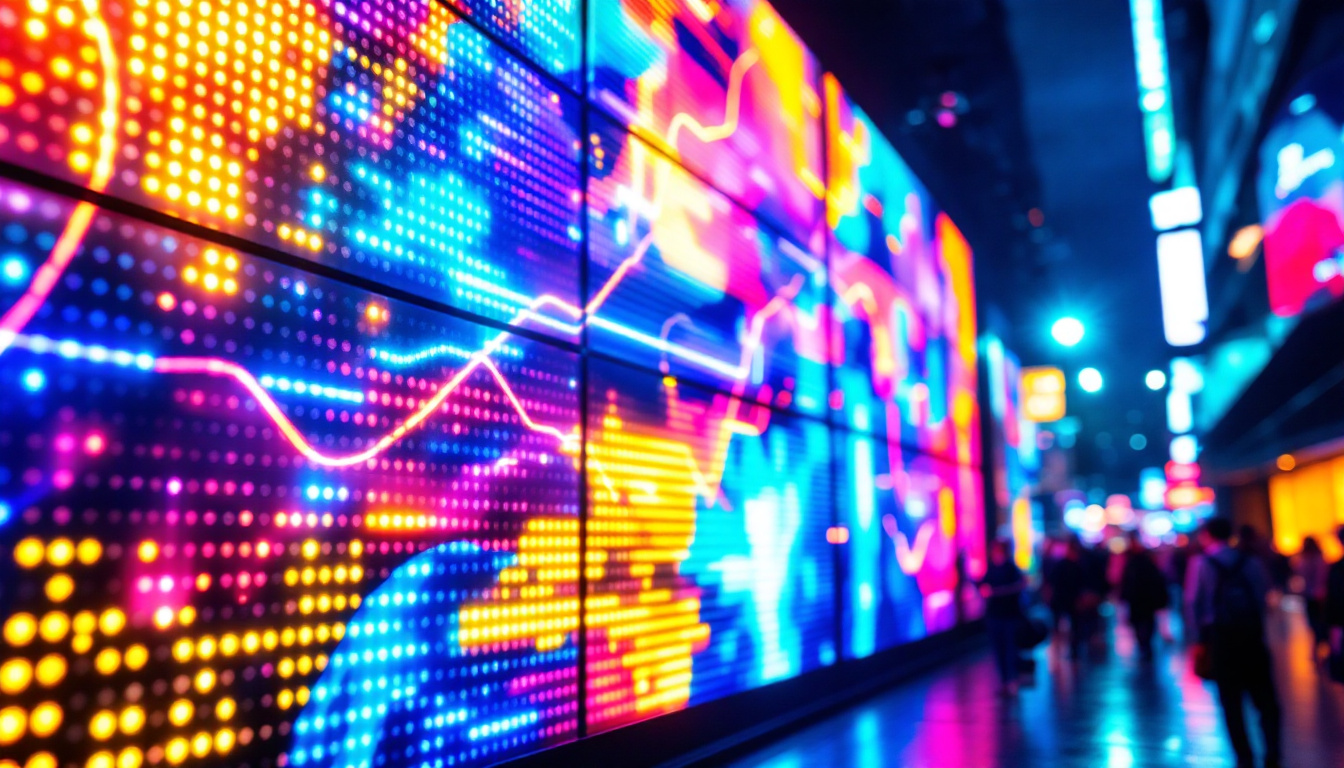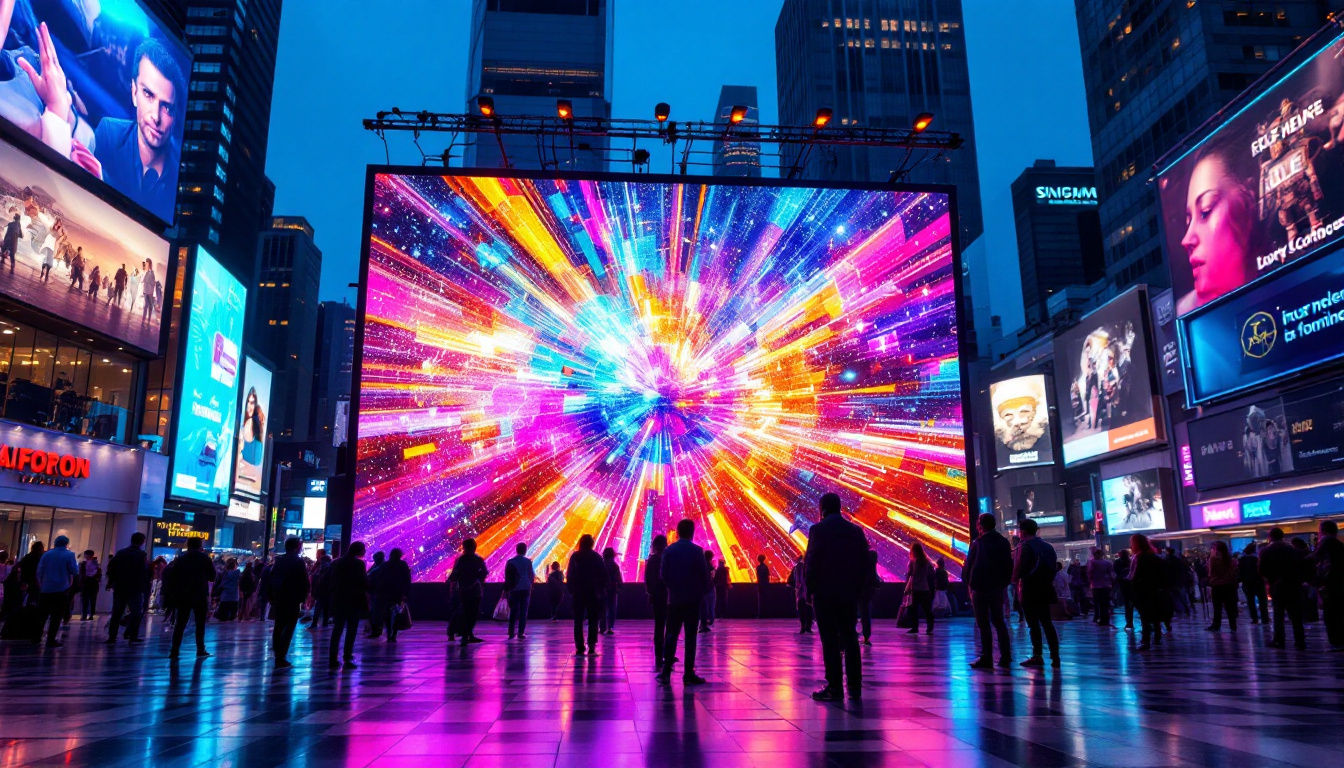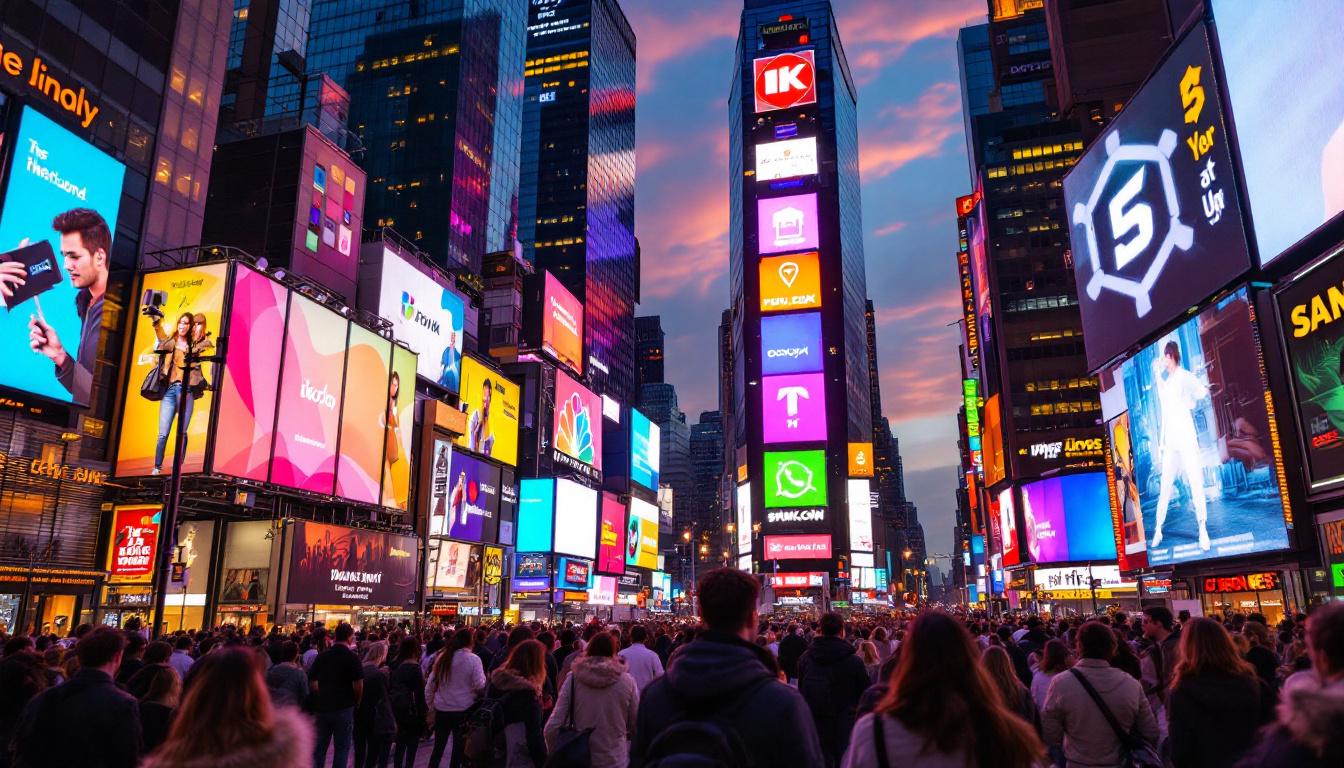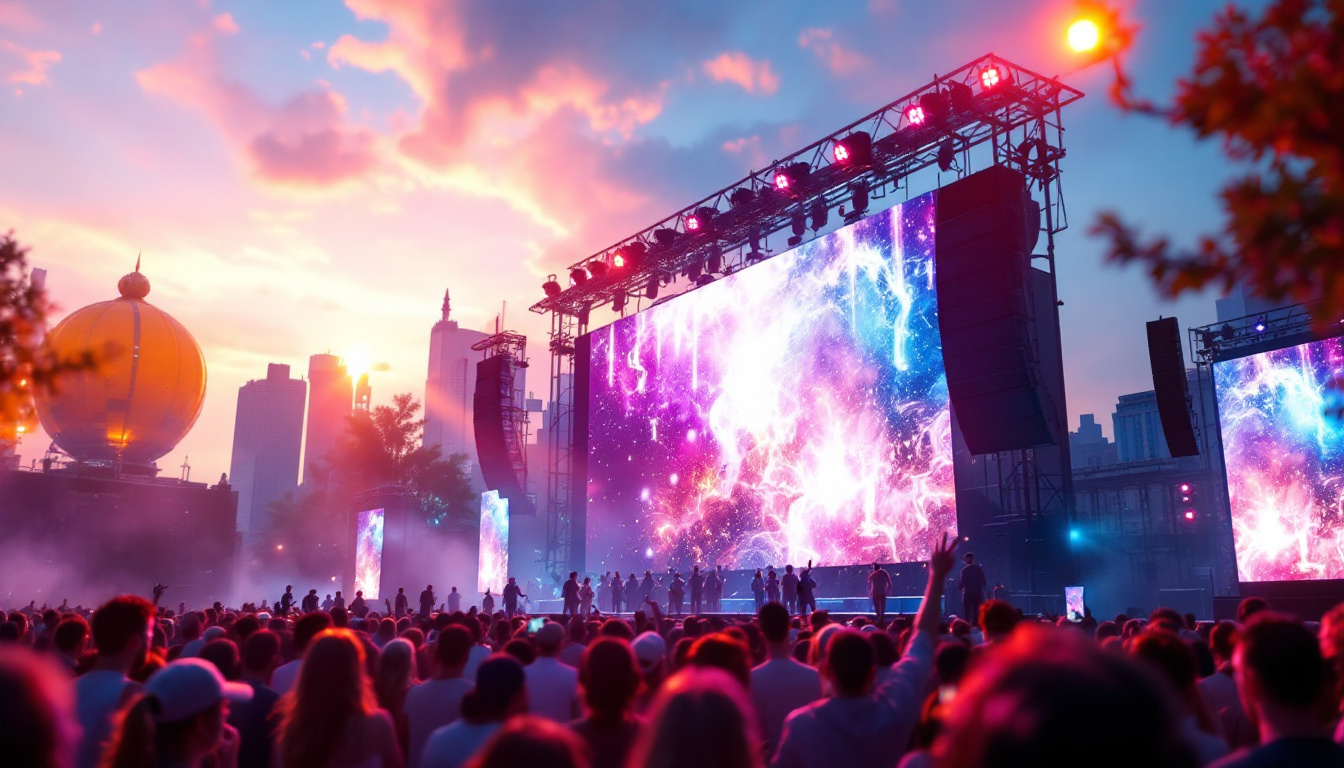In the digital age, visual communication has become increasingly important. One of the most effective ways to convey messages and information is through LED displays. This article delves into the intricacies of LED displays, particularly focusing on the Sistema Res technology. By understanding how LED displays work, their applications, and the advantages they offer, businesses and individuals can make informed decisions about their use.
Understanding LED Technology
LED, or Light Emitting Diode, is a semiconductor device that emits light when an electric current passes through it. This technology has advanced significantly over the years, allowing for a variety of applications, from simple indicator lights to complex display systems. The evolution of LED technology has not only transformed the way we illuminate our spaces but has also played a crucial role in energy efficiency, reducing the carbon footprint associated with traditional lighting methods.
How LED Displays Work
At the core of an LED display are individual diodes that emit light in various colors. These diodes are arranged in a grid format, forming pixels. When electrical signals are sent to these pixels, they light up in different combinations to create images and text. The resolution of an LED display is determined by the number of pixels it contains; higher pixel counts yield sharper images. This pixel density is particularly important in applications where detail is paramount, such as in digital signage or high-definition televisions, where viewers expect crisp and vibrant visuals.
LED displays can be categorized into two main types: direct view and rear-projection. Direct view displays are made up of individual LEDs that are visible from the front, while rear-projection displays use a light source behind a screen to project images. Each type has its own set of advantages and disadvantages, making them suitable for different applications. For instance, direct view displays are often favored for their brightness and clarity in well-lit environments, while rear-projection displays can be more space-efficient and are typically used in larger venues where distance from the audience is a factor.
Types of LED Displays
LED displays come in various types, each designed for specific uses. Common types include:
- Outdoor LED Displays: These are designed to withstand harsh weather conditions and are often used for advertising in public spaces. Their durability ensures that they remain operational in rain, snow, or extreme temperatures, making them a reliable choice for businesses looking to capture the attention of passersby.
- Indoor LED Displays: Typically used in venues such as theaters and sports arenas, these displays offer high resolution and brightness for clear visibility. The technology behind indoor displays often incorporates advanced features like high refresh rates, which are essential for displaying fast-moving content without blurring.
- Flexible LED Displays: These displays can be bent or shaped to fit unique spaces, making them ideal for creative installations. Their adaptability allows designers to create immersive environments, such as curved screens in museums or interactive displays in retail settings, enhancing the overall user experience.
In addition to these common types, there are also specialized LED displays, such as transparent LED screens that allow light to pass through, making them perfect for use in storefronts where visibility from both inside and outside is desired. Furthermore, advancements in LED technology have led to the development of microLED displays, which promise even greater efficiency and color accuracy, paving the way for the next generation of visual technology. As LED technology continues to evolve, its applications are becoming increasingly innovative, reshaping industries from advertising to entertainment and beyond.
Applications of LED Displays
LED displays have a wide range of applications across various industries. Their versatility makes them a popular choice for both commercial and personal use.
Advertising and Marketing
One of the most prominent uses of LED displays is in advertising. Businesses utilize these displays to capture the attention of potential customers with vibrant colors and dynamic content. Outdoor LED billboards, for example, can showcase multiple advertisements in a rotating manner, maximizing exposure and engagement.
In retail environments, indoor LED displays can be used to promote sales, highlight new products, or provide information about services. The ability to change content quickly allows businesses to adapt their marketing strategies in real-time, making LED displays an invaluable tool for modern advertising.
Entertainment and Events
LED displays play a crucial role in the entertainment industry. Concerts, festivals, and sporting events often feature large LED screens that enhance the audience’s experience. These displays can show live feeds, graphics, and animations, creating an immersive atmosphere.
Moreover, event organizers can use LED displays for wayfinding and information dissemination. Clear, bright displays can guide attendees to various locations, ensuring a smooth experience.
Public Information and Safety
LED displays are also widely used for public information and safety purposes. Traffic management systems often employ LED signs to convey real-time information about road conditions, accidents, or detours. Similarly, public transport systems utilize LED displays to provide updates on schedules and delays, improving commuter experience.
In emergency situations, LED displays can be crucial for disseminating urgent information quickly and effectively. Their visibility and clarity can make a significant difference in ensuring public safety.
Advantages of LED Displays
The growing popularity of LED displays can be attributed to several advantages they offer over traditional display technologies. Understanding these benefits can help businesses and organizations make informed decisions regarding their use.
Energy Efficiency
One of the most significant advantages of LED displays is their energy efficiency. Compared to traditional lighting technologies, LEDs consume significantly less power while providing brighter and more vibrant light. This not only reduces electricity costs but also contributes to a smaller carbon footprint, making LED displays a more environmentally friendly option.
Longevity and Durability
LED displays are designed to last. With a lifespan often exceeding 50,000 hours, they require less frequent replacements than traditional displays. This durability is particularly beneficial for outdoor applications, where displays are exposed to harsh weather conditions.
Additionally, LED technology is more resistant to shock and vibration, making these displays ideal for high-traffic environments and events where equipment may be subject to movement.
High-Quality Visuals
LED displays are known for their exceptional visual quality. They can produce bright, vivid colors and high contrast ratios, ensuring that content is easily visible even in bright sunlight. The ability to display dynamic content, including videos and animations, further enhances the viewer’s experience.
Moreover, advancements in LED technology have led to improved resolution and pixel density, allowing for sharper images and finer details. This is particularly important in applications where clarity is paramount, such as in medical imaging or high-end advertising.
Challenges and Considerations
While LED displays offer numerous advantages, there are also challenges and considerations that potential users should keep in mind. Understanding these factors can help in making the right choices for specific applications.
Initial Costs
The initial investment for LED displays can be higher than that of traditional display technologies. However, it is essential to consider the long-term savings associated with energy efficiency and reduced maintenance costs. Over time, the total cost of ownership may be lower for LED displays, making them a wise investment.
Installation and Maintenance
Installing LED displays can be complex, particularly for large-scale applications. Proper planning and professional installation are crucial to ensure optimal performance and longevity. Additionally, while LED displays require less maintenance than traditional displays, they still need periodic checks and servicing to maintain their quality and functionality.
Content Management
To maximize the effectiveness of LED displays, businesses must invest in content management systems that allow for easy updates and scheduling of content. This can add an additional layer of complexity, particularly for organizations that may not have the technical expertise in-house.
The Future of LED Displays
The future of LED displays looks promising, with ongoing advancements in technology and applications. As industries continue to evolve, LED displays are likely to play an even more significant role in visual communication.
Innovations in Technology
Emerging technologies such as microLED and OLED are paving the way for even more advanced LED displays. MicroLED technology offers improved resolution and color accuracy, while OLED displays provide deeper blacks and better contrast ratios. These innovations are expected to enhance the capabilities of LED displays, making them even more appealing for various applications.
Integration with Smart Technology
As smart technology becomes more prevalent, LED displays are increasingly being integrated into smart systems. This includes features such as remote monitoring, automated content updates, and real-time data analytics. Such integration can streamline operations and improve the effectiveness of visual communication strategies.
Environmental Considerations
With growing awareness of environmental issues, the demand for sustainable technologies is on the rise. LED displays, with their energy efficiency and longevity, are well-positioned to meet this demand. Future developments may focus on further reducing the environmental impact of manufacturing and disposing of LED displays, making them an even more sustainable choice.
Conclusion
LED displays, particularly those utilizing Sistema Res technology, represent a significant advancement in visual communication. Their versatility, energy efficiency, and high-quality visuals make them an ideal choice for a wide range of applications, from advertising to public safety. While there are challenges to consider, the benefits often outweigh the drawbacks, especially when viewed through the lens of long-term investment.
As technology continues to evolve, LED displays are likely to become even more integral to how information is shared and experienced. Understanding the capabilities and potential of these displays can empower businesses and organizations to leverage them effectively, ensuring they remain at the forefront of visual communication.
Discover LumenMatrix’s Advanced LED Solutions
Ready to elevate your visual communication strategy with cutting-edge LED technology? LumenMatrix is at the forefront of innovation, offering a diverse range of LED display modules designed to captivate and engage your audience. From dynamic Indoor and Outdoor LED Wall Displays to specialized solutions like Vehicle LED Displays, LED Sports Displays, and even Custom LED Displays, LumenMatrix has the perfect solution to bring your brand’s message to life. Experience the transformative power of our LED display technology and take the first step towards revolutionizing your visual presence. Check out LumenMatrix LED Display Solutions today and see the difference for yourself.

